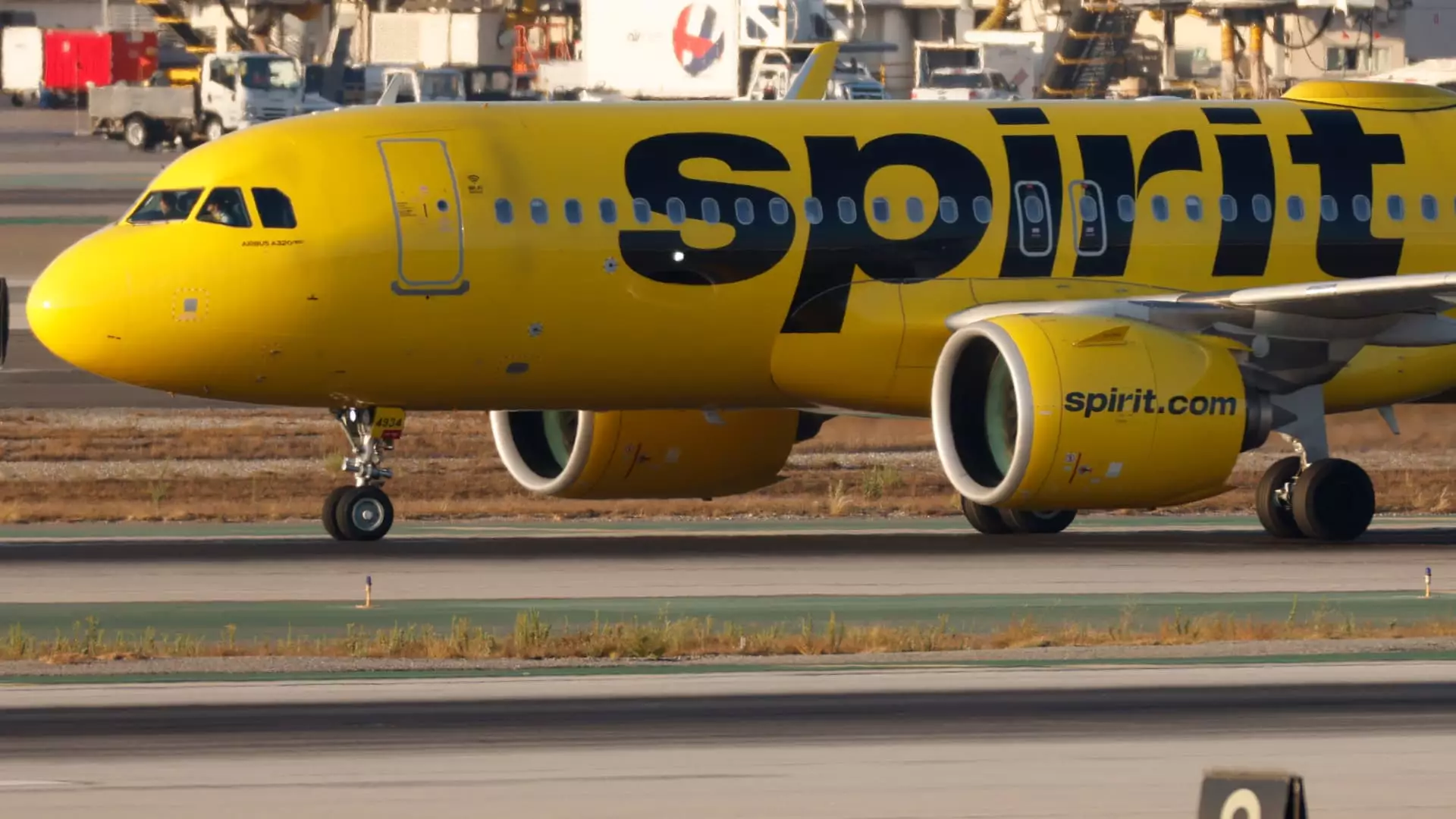Spirit Airlines has recently emerged from the shadows of bankruptcy, a process that has been fraught with challenges. After enduring a staggering $1.2 billion net loss last year, the airline’s CEO Ted Christie claims that they have turned the corner, becoming “leaner” and ready to tackle formidable competitors like Southwest Airlines. While this resurgence is commendable, one cannot help but wonder if the underlying strategy will prove sustainable in the long term. Bankruptcy can offer fresh starts, but it often highlights deeper systemic issues, and one must question if Spirit has effectively addressed these woes or merely applied a cosmetic layer of change.
Southwest’s Unprecedented Shift
It’s hard to ignore the seismic shift in Southwest Airlines’ operational policies, prompting a competitive shake-up that could benefit Spirit Airlines. For the first time in its fifty-year history, Southwest is introducing fees for checked baggage—a move that might alienate their loyal customer base. Historically, travelers have flocked to Southwest because of its well-advertised two-bag policy, which positioned them as a consumer-friendly choice amid rising air travel costs. With this strategic pivot, Walmart’s “everyday low price” model appears to be at risk; will customers now seek an alternative? Spirit could be the unexpected benefactor, as they are known for their “la carte” pricing model. Spirit’s CEO is optimistic that disgruntled Southwest customers could be drawn to their low-cost offerings as traditional barriers dissolve.
Changing Consumer Preferences
The introduction of Southwest’s basic economy class without free seat assignments represents a substantial shift in the industry, and customers who once enjoyed the hassle-free spirit of flying with Southwest may start to reconsider their options. What remains to be seen, however, is whether Spirit’s somewhat harsh image will resonate positively with these newly unfettered travelers. Can an airline known primarily for its hidden fees and additional charges truly deliver a value proposition compelling enough to win over new clientele? This remains dubious. The true test lies in Spirit’s ability to not just attract new customers but to maintain satisfaction and loyalty post-purchase.
Beyond Tactics: Is It Sustainable?
While Spirit is already claiming to have an edge over Southwest in specific markets like Kansas City and Nashville, can this short-term strategy endure as a long-term foundation? Such a positioning gambit is precarious: a few low fares do not equate to a trustworthy flying experience. With their focus on profitability, they must also live up to consumer expectations that have shifted dramatically since the pandemic. Avoiding disillusionment and maintaining operational reliability should be the centerpiece of their strategies over flashy ticket promotions and bundles that attract the price-sensitive traveler.
Restructuring and Financial Health
Spirit Airlines’ restructuring efforts, which included shedding $795 million in debt and a $350 million capital infusion, certainly seem like necessary steps toward a more robust financial recovery. Nevertheless, the mechanics of flying remain complex, and a healthy balance sheet does not inherently translate into improved customer satisfaction. Operational hiccups fueled by engine recalls or other logistic challenges can easily quell even the best public relations narratives. This brings to light the ongoing question: can Spirit sustain a viable business model that distinguishes itself in a landscape crowded with low-cost carriers?
Future Competitions and Collaboration
Christie has dropped hints at possible mergers or collaborations when he said that the idea of consolidating into a larger airline is not “off the table.” However, the landscape is littered with unstable alliances and failed partnerships, especially within the airline industry, where obstacles like regulatory approvals can deter successful mergers. In a world where airline customers are often subject to fly-by-night decisions by corporate boards, the prospect of such strategic alliances may be more fantasy than reality.
Ultimately, Spirit’s journey post-bankruptcy is both a complex challenge and an opportunity for growth. Whether this newly emerging Spirit takes flight or stumbles remains to be seen. As they attempt to carve a niche in a competitive arena, consumers will be watching closely. In this game of survival, adaptability, integrity, and, importantly, customer satisfaction will dictate whether Spirit can indeed rise above their checkered past.

